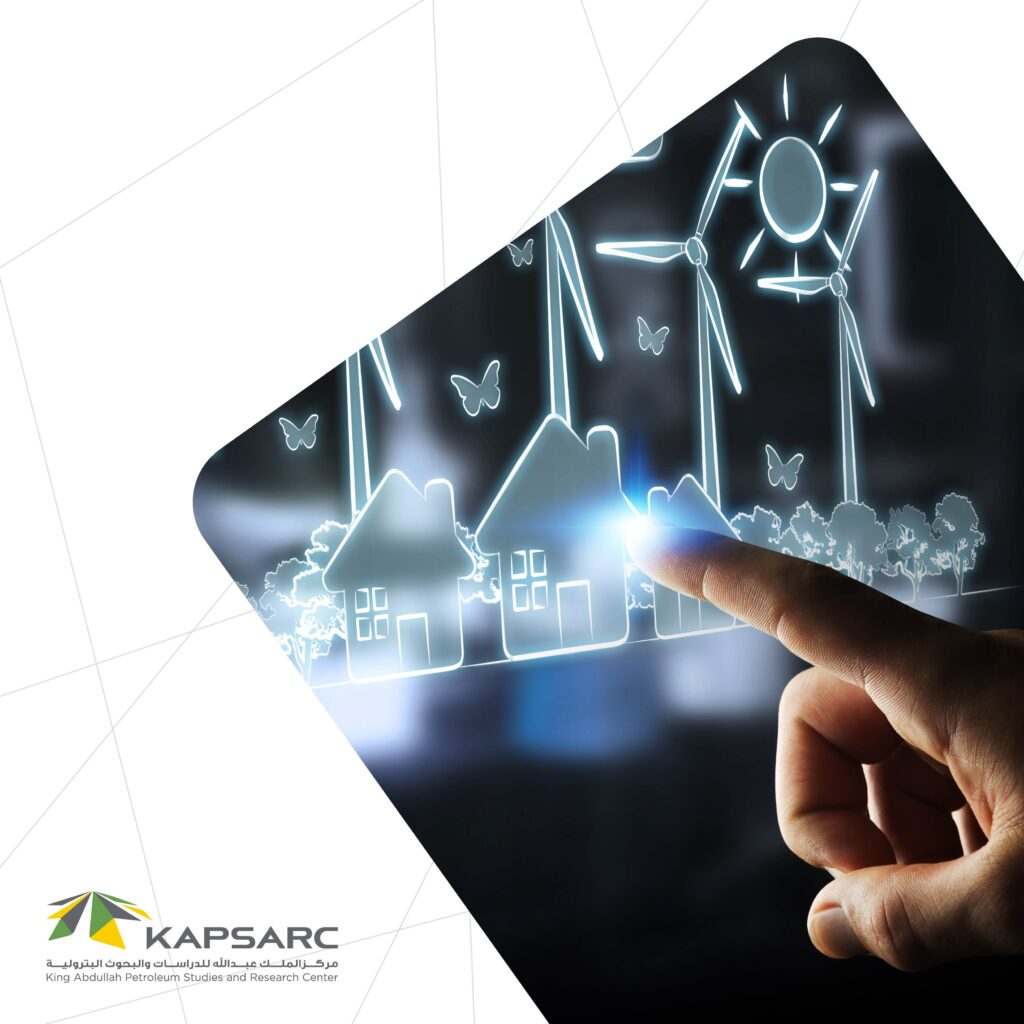النشرة الأسبوعية مساءً كل يوم سبت من اختيار المحررين
نشرة أسبوعية مسائية من بودكاست فلسطين تصلُك إلى بريدك الإلكتروني، تُقدِّم أمتع وأفضل الحلقات من أكثر من ٣٠٠ برنامج بودكاست عربي نختارها لك لتستمع وتستمتع وتتعلّم.
Podcast script:
The world is witnessing a growing demand for electricity. This has fueled a move toward renewable and cleaner energy sources, as many experts anticipate that over 70% of the needed global system capacity will come from solar and wind energy by 2050. The rapid growth of renewables is driven by the increasing numbers of micro-grids, continued renewable energy penetration in the global power sector, and progress in electromobility.
However, renewable energy projects are confronted with a very significant obstacle that hinders their large-scale deployment. By their innate characteristics, wind and solar power are intermittent. Solar generation operations cease at night, and wind turbines stop rotating when air currents are not strong enough to generate momentum. This cyclical trait conflicts with the electrical grid operators’ duty of maintaining a continuous balance between supplied electricity and its demand. If that fine balance is disturbed, the grid will collapse causing power outages and blackouts. One of the possible solutions to overcome this issue is to utilize large-scale energy storage technologies.
The current technological advancements and downward cost trajectories of the energy storage sector could help to mitigate large fluctuations in grid supply. However, several technological and regulatory challenges facing energy storage remain, making this issue relevant for a number of key energy stakeholders, including the market’s participants, regulators, and consumers.
In their workshop brief, titled: “Utility-Scale Storage: Sleeping Giant or Mirage?” KAPSARC’s researchers discussed key opportunities and challenges related to energy storage technologies’ deployment, and sought to formulate a better understanding of how energy storage might evolve. The researchers noted that energy storage technologies are an enabler of increased integration of renewable generation in the power sector, as they can be deployed at the generation, transmission, and distribution segments of the energy supply chain, making storage technologies especially attractive for vertically integrated utilities. They can also compete in energy, capacity, and ancillary markets. In short, storage can act both as an energy provider and as a load.
From a technological standpoint, there are four types of energy storage technologies that are available in the market at this moment, which are electrochemical, electrical storage, mechanical storage, and thermal. Out of these four types, electrochemical storage is expected to become the most prevalent, with a market cap that is expected to reach $4 billion by 2025. The cost of battery technology is expected to decrease substantially due to increased efficiency gains within the battery supply chain and upscaling of manufacturing.
At the same time, the multiple functions of energy storage make it difficult to regulate, and stand in the way of wider and speedier storage deployment. Currently, there is no market sophisticated enough to accommodate storage technologies and all of their capabilities, which is mainly due to the insufficient clarity on long-term revenues that would result from deploying energy storage. Moreover, there are currently no markets for possible offered services, like avoiding thermal generation starts, increasing system efficiency, ramping/following, and black starts.
In terms of finance, most storage projects have been financed through equity and government grants; however, they have inherited regulations that don’t cover all of the services they offer as mentioned earlier, which limits their revenue streams that reward performance. Hence, investors are very reluctant to enter this nascent field. Yet, several countries and utilities have taken progressive steps to enable further energy storage deployments, such as is the case in the United States, Australia, Germany, and Italy.
Among the steps that these countries took are allowing energy storage to compete in all markets, revising interconnection processes to include storage, encouraging hybridization, setting procurement targets for renewable and storage projects, offering subsidies and rebates through green energy financing programs, and rewarding performance (such as faster response times and ramping). If correctly employed, there is reasonable evidence to be optimistic that energy storage will deliver on its potential and be an important part of the future of global energy.
To view the full study
Author: Amro Elshurafa
[:ar]نص الحلقة:
يشهد عالمنا طلباً متزايداً على الكهرباء، مما نشّطَ الحراك نحو مصادر الطاقة المتجددة والنظيفة، إذ يتوقع العديد من الخبراء أن أكثر من 70% من قدرة النظام العالمي المطلوبة ستأتي من الطاقة الشمسية وطاقة الرياح بحلول عام (2050م). ويعزى النمو السريع لمصادر الطاقة المتجددة إلى زيادة أعداد الشبكات الكهربائية الصغيرة، واستمرار تغلغل الطاقة المتجددة في قطاع الطاقة العالمي، والتقدم التقني في المركبات الكهربائية.
إلا أن مشاريع الطاقة المتجددة تواجه عقبة كبيرةً للغاية تعيق من انتشارها على نطاقٍ واسعٍ، فطاقة الرياح والطاقة الشمسية متقطعتان بطبيعتهما، إذ تتوقف عمليات توليد الطاقة الشمسية ليلاً، وتتوقف توربينات الرياح عن الدوران عندما لا تكون التيارات الهوائية قويةً بما يكفي لتوليد الزخم، وتتعارض هذه السمة الدورية مع واجب مشغلي الشبكة الكهربائية في الحفاظ على توازنٍ مستمرٍ بين الكهرباء المُوردة والطلب عليها، إذ ستنهار الشبكة الكهربائية إذا ما اضطرب هذا التوازن الدقيق، مما يتسبب في انقطاع التيار الكهربائي عن المستهلكين. وإن أحد الحلول الممكنة للتغلب على هذه المشكلة هو استخدام تقنيات تخزين الطاقة على نطاقٍ واسعٍ.
إن التقدم التقني الحالي في قطاع تخزين الطاقة والمسار التنازلي المتوقع لتكلفته يمكن أن يساعدان في التخفيف من التقلبات الكبيرة في إمدادات الشبكة، ولكن ما تزال هناك العديد من التحديات التقنية والتنظيمية التي تواجه تقنيات تخزين الطاقة، مما يجعل هذه القضية وثيقة الصلة بعدد من أصحاب المصلحة الرئيسين في مجال الطاقة، بما في ذلك الجهات التنظيمية، والمشاركين في السوق، والمستهلكين.
وفي موجز ورشة العمل بعنوان: “التخزين على نطاق المرافق: عملاق نائم أم مجرد سراب؟”، ناقش باحثو كابسارك الفرص والتحديات الرئيسة المتعلقة بنشر تقنيات تخزين الطاقة، وسعوا إلى صياغة فهم أفضل لكيفية تطور هذا القطاع. ولقد أشار الباحثون إلى أن تقنيات تخزين الطاقة هي عامل تمكين لزيادة تكامل تقنيات توليد الطاقة المتجددة مع قطاع الطاقة، إذ يمكن نشرها في قطاعات التوليد والنقل والتوزيع لسلسلة إمداد الطاقة، مما يجعل تقنيات التخزين جذابة بشكل خاص للمرافق المتكاملة رأسياً، ويمكنها أيضاً التنافس في أسواق الطاقة والقدرة والأسواق المساعدة، وذلك لأن تقنيات التخزين يمكن أن تعمل كمُزودٍ للطاقة أو كحِملٍ.
ومن وجهة نظر تقنيةٍ، توجد أربعة أنواع من تقنيات تخزين الطاقة المتوفرة في السوق حالياً، وهي التخزين الكهروكيميائي، والكهربائي، والميكانيكي، والحراري. ويُعتقد أن التخزين الكهروكيميائي سيصبح الأكثر انتشاراً من بين هذه الأنواع الأربعة، إذ يُتوقع أن تصل القيمة السوقية له إلى أربعة مليارات دولارٍ بحلول سنة (2025م). ومن المتوقع أيضًا أن تنخفض تكلفة تقنية البطاريات بشكلٍ كبيرٍ بسبب زيادة مكاسب الكفاءة داخل سلسلة توريد البطاريات ورفع كميات التصنيع.
إن الوظائف المتعددة لتقنيات تخزين الطاقة تجعلها -في الوقت نفسه- صعبة التنظيم، مما يقف في طريق نشر تقنيات التخزين على نطاق أوسع وأسرع. فحاليًا لا توجد سوق متطورة بما يكفي لاستيعاب تقنيات التخزين وجميع إمكانياتها، ويرجع ذلك أساساً إلى عدم الوضوح الكافي بشأن الإيرادات طويلة الأجل التي قد تنتج عن نشر تقنيات تخزين الطاقة. وعلاوةً على ذلك، لا توجد حالياً أسواق لجميع الخدمات المعروضة الممكنة، مثل تجنب تشغيل المولدات الحرارية، وزيادة كفاءة النظام، وإعادة تشغيل وحدة الطاقة ذاتياً.
ومن حيث التمويل، تمُوّل معظم مشاريع التخزين عبر المنح الحكومية والأسهم، ولكنها ورثت لوائح تنظيمية لا تغطي جميع الخدمات التي تقدمها كما ذكرنا سابقاً، مما يحد من تدفقات الإيرادات التي تكافئ الأداء العالي. ومن ثم يتردد المستثمرون بشدة في دخول هذا المجال الناشئ. إلا أن العديد من الدول والمرافق اتخذت خطواتٍ تدريجية لتمكين المزيد من عمليات نشر تخزين الطاقة، كما هي الحال في الولايات المتحدة وأستراليا وألمانيا وإيطاليا.
ومن بين الخطوات التي اتخذتها هذه البلدان السماح لتقنيات تخزين الطاقة بالمنافسة في جميع الأسواق، ومراجعة عمليات الربط لتشمل التخزين، وتشجيع التهجين، وتحديد أهداف الشراء لمشاريع الطاقة المتجددة والتخزين، وتقديم الإعانات والتخفيضات من خلال برامج تمويل الطاقة الخضراء، ومكافأة الأداء (مثل الاستجابة السريعة لتغير الأحمال). وإذا ما نُفّذت هذه البرامج بشكلٍ صحيحٍ، فستكون هناك أدلة تدعو إلى التفاؤل بأن تقنيات تخزين الطاقة ستحقق إمكاناتها لتكون جزءاً مهماً من مستقبل الطاقة العالمية.
المؤلف: عمرو الشرفاء
[:]- تطوير وتنقيح الاتجاهات السائدة لتحسين سلاسل القيمة في الولايات المتحدة الأمريكية : عامل النفط الصخري
- التخزين على نطاق المرافق: عملاق نائم أم مجرد سراب؟
- انتقال المملكة العربية السعودية إلى اقتصاد الهيدروجين: نقلة نوعية
- أمن الطاقة وتنويع المحفظة: من منظور المصدرين
- إصلاحات قطاع الكهرباء في المملكة العربية السعودية: الملامح، والتحديات، والفرص لتفعيل أسواق مشتركة – الجزء الثاني
- إصلاحات قطاع الكهرباء في المملكة العربية السعودية: الملامح، والتحديات، والفرص لتفعيل أسواق مشتركة – الجزء الأول
- تجربة المملكة العربية السعودية في تدابير التخفيف من إحراق الغازات
- توضيح آليات دعم أنظمة التوليد الموزع للطاقة الشمسية الكهروضوئية
- آفاق تطوير الغاز غير التقليدي في المملكة العربية السعودية
- تقدير تأثير جائحة كوفيد-19 على الناتج المحلي الإجمالي للمملكة العربية السعودية



